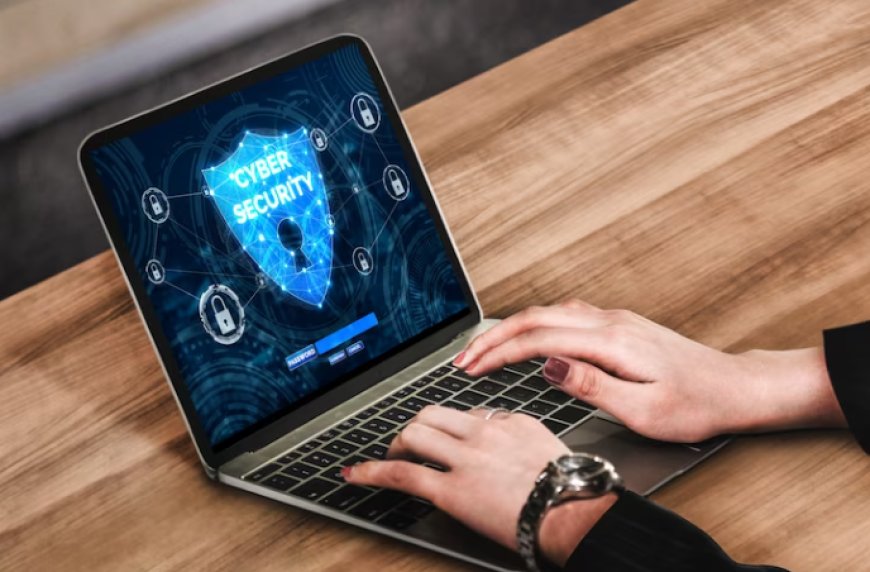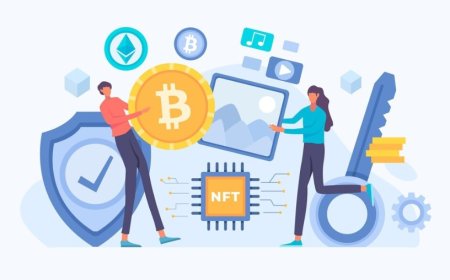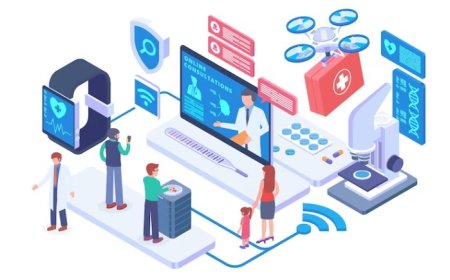The Power of Cyber Threat Intelligence
Explore cyber threats, intelligence, security, analysis, protection, strategies, risk, prevention, technology, data safety. Enhance defense mechanisms

Cyber Threat Intelligence (CTI) refers to the process of collecting, analyzing, and interpreting information about potential cyber threats and vulnerabilities. It involves gathering data from various sources, such as open-source intelligence, closed-source intelligence, human intelligence, and technical intelligence, to gain insights into the tactics, techniques, and intentions of malicious actors. CTI empowers organizations to proactively defend against cyber threats, enhance situational awareness, support incident response efforts, and make informed decisions to strengthen their cybersecurity posture.
Importance of CTI in today's digital landscape
The importance of Cyber Threat Intelligence (CTI) in today's digital landscape can be summarized in the following points:
-
Proactive Defense: CTI enables organizations to proactively defend against cyber threats by providing early warning indicators and actionable insights, helping to prevent attacks before they occur.
-
Enhanced Situational Awareness: CTI provides a comprehensive understanding of the evolving threat landscape, allowing organizations to identify emerging trends, tactics, and vulnerabilities that could potentially impact their systems and infrastructure.
-
Effective Incident Response: By leveraging CTI, organizations can improve their incident response capabilities. CTI provides valuable context and actionable information during incidents, aiding in the detection, containment, and mitigation of cyber attacks.
-
Informed Decision-Making: CTI equips organizations with intelligence-driven insights, enabling informed decision-making regarding cybersecurity investments, resource allocation, and risk management strategies.
-
Proactive Threat Hunting: CTI empowers organizations to proactively hunt for potential threats within their networks and systems, helping to identify and neutralize malicious activities before they cause significant damage.
-
Collaboration and Information Sharing: CTI encourages collaboration and information sharing within the cybersecurity community, fostering a collective defense approach that strengthens overall cybersecurity resilience.
-
Compliance and Regulations: CTI assists organizations in meeting compliance requirements and regulations by providing insights into potential threats and vulnerabilities specific to their industry or sector.
-
Competitive Advantage: By effectively utilizing CTI, organizations can gain a competitive edge by proactively addressing cybersecurity risks, protecting their reputation, and safeguarding their customers' trust.
Understanding Cyber Threat Intelligence
Cyber Threat Intelligence (CTI) refers to the process of gathering, analyzing, and interpreting information about potential cyber threats and vulnerabilities. It involves collecting data from various sources, analyzing it, and providing actionable insights to inform decision-making and enhance cybersecurity measures.
Types of Cyber Threat Intelligence
Tactical Intelligence: This type of intelligence focuses on the specific details of cyber threats, such as indicators of compromise (IOCs) and specific attack techniques. Tactical intelligence helps in immediate detection, response, and mitigation of ongoing threats.
Operational Intelligence: Operational intelligence provides insights into the capabilities, infrastructure, and tactics employed by threat actors. It helps organizations understand the context and patterns behind cyber threats, enabling more effective defense strategies.
Strategic Intelligence: Strategic intelligence focuses on the long-term view of cyber threats. It involves analyzing trends, emerging threat actors, geopolitical factors, and other macro-level information to inform strategic decision-making and proactive security planning.
Sources of Cyber Threat Intelligence include:
-
OSINT refers to publicly available information gathered from sources like social media, public databases, forums, and websites. It provides valuable insights into threat actors, vulnerabilities, and potential attack vectors.
-
CSINT refers to proprietary or restricted information obtained from trusted third-party vendors, cybersecurity companies, or law enforcement agencies. CSINT may include threat feeds, malware analysis reports, or data from specialized intelligence platforms.
-
HUMINT involves information collected from human sources, such as cybersecurity experts, industry professionals, or threat intelligence analysts. This intelligence often provides valuable context, expert opinions, and unique insights into emerging threats.
-
TECHINT focuses on analyzing technical data, including network traffic, logs, malware samples, and vulnerabilities. It helps in identifying specific attack patterns, understanding exploit techniques, and detecting potential intrusions.
The Role of Cyber Threat Intelligence
Enhancing Situational Awareness
-
CTI helps organizations stay vigilant by continuously monitoring and analyzing information about potential cyber threats, enabling proactive defense measures.
-
By gathering and analyzing intelligence on emerging threats, attack techniques, and vulnerabilities, CTI provides organizations with a comprehensive understanding of the evolving threat landscape they operate in.
Supporting Incident Response
-
CTI assists in identifying IOCs, such as malicious IP addresses, domains, or patterns of behavior, which help in detecting ongoing attacks or potential security breaches.
-
CTI enriches incident response efforts by providing contextual information about the threat actors, their motivations, and the techniques they employ. This information enables effective decision-making and response strategies.
-
CTI supports incident response teams by providing timely information and intelligence that aids in containing and mitigating the impact of cyber attacks, minimizing potential damage.
Informing Risk Management
-
CTI enables organizations to assess the likelihood and potential impact of identified threats, allowing them to prioritize their resources and allocate appropriate security measures.
-
By understanding the evolving threat landscape and the specific risks faced, CTI helps organizations prioritize and invest in the most effective security measures, technologies, and resources.
-
CTI empowers organizations to adopt a proactive approach to cybersecurity by anticipating and mitigating potential threats before they manifest. It supports the development and implementation of proactive defense strategies.
Benefits of Cyber Threat Intelligence
Early Warning and Detection
CTI provides organizations with early warning capabilities by proactively identifying emerging threats and potential attack vectors. By staying ahead of the evolving threat landscape, organizations can implement preventive measures and enhance their defenses. Additionally, CTI offers insights into attacker tactics and techniques, enabling organizations to better understand their adversaries and develop effective countermeasures.
Improved Decision-Making
CTI empowers organizations to make informed and data-driven decisions regarding their cybersecurity strategy. By analyzing threat intelligence, organizations can assess the potential risks, prioritize their security investments, and allocate resources effectively. CTI enables better decision-making by providing contextual information and actionable insights to address the most critical cybersecurity challenges.
Mitigating Financial Losses
One of the significant benefits of CTI is its potential to minimize the financial impact of cyber attacks. By leveraging threat intelligence, organizations can proactively detect and respond to threats, thereby reducing the chances of successful attacks. This proactive approach helps mitigate potential financial losses associated with data breaches, operational disruption, reputational damage, and costly recovery efforts. Additionally, by reducing downtime and enhancing incident response capabilities, CTI contributes to minimizing the overall financial impact of cyber incidents.
Challenges and Limitations of Cyber Threat Intelligence
Data Overload and Noise
The vast amount of data available for cyber threat intelligence can pose challenges for organizations. Managing and processing this data can be overwhelming, leading to difficulties in identifying relevant and actionable intelligence. Distinguishing valuable insights from noise and irrelevant information becomes crucial to ensure effective utilization of CTI resources.
Attribution and Trustworthiness
Attributing cyber threats to specific threat actors or entities can be challenging. Establishing the credibility and reliability of sources becomes critical in determining the trustworthiness of the intelligence. Cyber threat intelligence analysts need to verify and validate the information they receive to ensure its accuracy and legitimacy. Dealing with false or misleading information further complicates the task of attribution and trustworthiness assessment.
Resource Constraints
Implementing an effective CTI program requires adequate resources, including expertise and dedicated personnel. The shortage of skilled cybersecurity professionals poses a challenge for organizations in effectively utilizing CTI. Building and maintaining a proficient CTI team capable of analyzing and interpreting threat intelligence is essential. Additionally, financial constraints may limit an organization's ability to acquire and invest in sophisticated intelligence tools and technologies.
Best Practices for Implementing Cyber Threat Intelligence
Implementing Cyber Threat Intelligence effectively requires organizations to adopt key best practices:
-
Establish a collaborative team involving stakeholders from different departments to leverage diverse expertise and promote knowledge sharing.
-
Leverage technology to automate data collection and analysis processes, saving time and resources while enhancing efficiency.
-
Stay updated on emerging threats and trends, regularly review and improve CTI processes to ensure they remain effective and aligned with evolving cyber threats.
Cyber Threat Intelligence plays a pivotal role in safeguarding our digital world against the ever-evolving landscape of cyber threats. By providing valuable insights, proactive identification of vulnerabilities, and timely response to emerging risks, it empowers organizations and individuals to make informed decisions and fortify their defenses. As technology continues to advance and threats become more sophisticated, the need for robust Cyber Threat Intelligence capabilities will only intensify. By investing in this vital discipline, we can stay one step ahead of adversaries, protect critical infrastructure, and ensure a safer and more secure digital future for all. Together, let us harness the power of knowledge and collaboration to outsmart cyber threats and preserve the trust and integrity of our interconnected world.




































